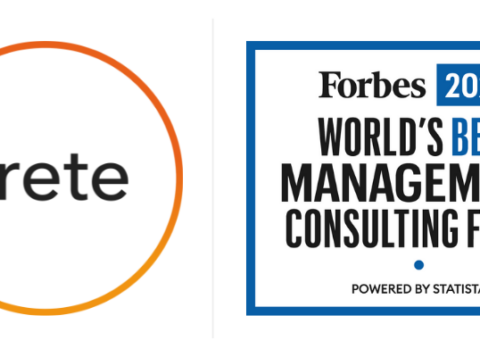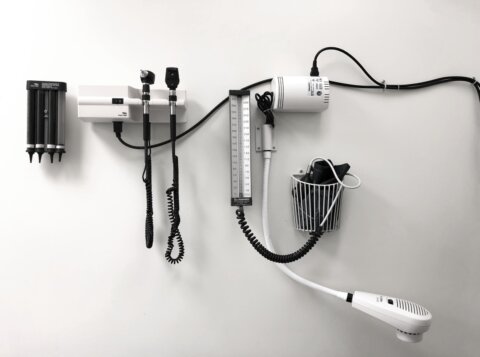The Value of Healthcare IT Governance
Healthcare organizations rely on efficiency, which directly impacts quality care, fiscal responsibility, and overall process improvement. The industry is also constantly evolving with changes in reform, regulations and technology. Almost all of these changes depend on information technology to succeed. That’s why IT governance in healthcare has become a critical discipline. With finite and often declining resources, hospitals and health systems must be good stewards of financial and human capital. Maintaining efficiency in the face of rapid change requires a strong healthcare IT governance framework that supports adaptability, accountability, and alignment with organizational goals.
In this article, we will break down the key components of an effective IT governance structure for healthcare, share questions you can use to help assess your current process maturity, and identify next steps you can take to kickstart the journey to optimal efficiency.
What is IT Governance?
IT governance is a formal framework that provides structure for prioritizing technology investments that support business objectives and align with enterprise standards. Within healthcare, IT governance ensures technology serves as a vehicle to achieve clinical, operational, and strategic goals.
As the demand for IT services grows, effective governance helps manage supply and demand to ensure appropriate deployment of limited and critical resources. It also provides the foundation for data governance in healthcare so information systems are secure, compliant, and reliable.
Why Should Healthcare Systems/Providers Focus on Optimizing IT Governance?
IT governance in hospitals and health systems prioritizes the stewardship of enterprise resources by strategically aligning IT – people, hardware and software services – with both clinical and business goals of the organization. Without appropriate operational oversight and a defined process for evaluating IT initiatives, organizations lack clear priorities, accountability, and visibility into resource availability. When this happens, IT teams may be left to make decisions they aren’t fully informed or empowered to make. Establishing a consistent governance process creates transparency, clarifies decision rights, and helps leadership make smarter, data-informed choices about technology investments.
Questions to Think About When Addressing Your System’s IT Governance
- Are IT efforts, strategies, and initiatives consistently aligned with your system’s overall goals?
- Are you investing in the right IT projects at the right time to improve workflows?
- Do IT efforts have defined KPIs and are these tracked over time?
- Are all key stakeholders appropriately involved in the prioritization and approval process of new initiatives?
- Are you effectively measuring electronic health records (EHR), IT staff utilization and deployment in order to understand existing and forecasted supply?
- Are you consistently meeting internal IT service levels?
- Is the entire process – submission, estimation, approval – transparent to end users, management, and executives?
- Are in-flight IT projects still producing their intended value? Or are they never reviewed after approval and set in motion?
These questions help healthcare leaders evaluate their IT governance framework and uncover opportunities to strengthen efficiency and accountability.
7 Paths to Optimal IT Governance Processes
- Improve Initial Intake Processes. Streamline how IT service requests are submitted and managed, eliminating those unlikely to be approved or implemented.
- Develop a Standard Business Case. Develop and utilize a standard business case to describe impact and effort for demand that can be used to compare all requests and prioritize those providing the most value for the effort required
- Reconstitute IT Governance Committees. Ensure committees are led by operations, with IT providing advisory and technical support.
- Define Multiple Approval Paths. Establish clear routes for emergency needs, risk/compliance/safety requests, growth projects, and operational improvements.
- Assign Dedicated IT Support for Operational and Clinical Areas. Provide a single point of contact for each department to improve communication and accountability.
- Improve IT Resource Tracking. Strengthen visibility into current and forecasted IT resource supply to better plan for demand.
- Document and Communicate the Process. Clearly outline each step – from request to implementation so stakeholders understand status, expectations, and results.
Concluding IT and Data Governance in Healthcare
In today’s ever-changing healthcare environment, organizations face a wide range of challenges — from regulatory compliance and cost efficiency to patient satisfaction and quality of care. Information technology enables nearly all of these priorities.
That’s why focusing on healthcare IT governance, and integrating it with a strong data governance strategy, is essential. Together, these frameworks ensure that technology decisions are made transparently, resources are used wisely, and information remains secure, compliant, and trustworthy.
By building and optimizing an IT governance framework in healthcare, systems can balance operational needs with innovation, delivering smoother, more efficient experiences for both staff and patients.




























































